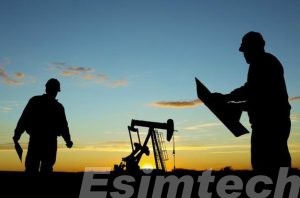Environmental Challenges of Oil Well Work and Sustainable Solut
-
The oil and gas industry has long been the engine of global industrialization and modern convenience. However, the very processes that extract this vital resource—specifically, oil well work—come with a significant environmental footprint. As global awareness and regulatory pressures intensify, the industry is being pushed to confront these challenges head-on. The good news is that a new wave of technology and operational shifts is paving the way for a more sustainable future, even in this traditionally carbon-intensive field.
Let’s delve into the primary environmental challenges and the innovative solutions being deployed.

Key Environmental Challenges
Methane Emissions and Flaring: Methane is a potent greenhouse gas, with over 80 times the warming power of carbon dioxide over a 20-year period. Leaks, known as "fugitive emissions," can occur from valves, connectors, and storage tanks throughout a well's lifecycle. Furthermore, the practice of flaring—burning off excess natural gas that can’t be processed or transported—releases CO₂ and other pollutants directly into the atmosphere, wasting a valuable energy resource.
l Water Management and Contamination: Oil well operations consume and produce vast quantities of water. Hydraulic fracturing (fracking) requires millions of gallons of water per well, straining local resources, especially in arid regions. The更大的挑战 is produced water—a toxic mix of water, salts, hydrocarbons, and naturally occurring radioactive materials that comes up with the oil. Spills, leaks from lined pits, or migration into groundwater aquifers can have devastating, long-term consequences for ecosystems and drinking water supplies.
l Land Disturbance and Habitat Fragmentation: The construction of well pads, access roads, and pipelines clears vegetation, displaces wildlife, and fragments habitats. This can lead to soil erosion, increased sedimentation in nearby waterways, and a loss of biodiversity. The cumulative impact of multiple well sites across a landscape can be substantial.
l Waste Generation: Beyond produced water, oil well work generates other solid and liquid wastes, including drill cuttings (rock fragments and drilling mud), contaminated soils, and various chemical additives. The disposal of this waste, often in injection wells or specialized landfills, carries risks of subsurface contamination and requires careful, permanent management.
Pioneering Sustainable Solutions
Addressing these challenges is not just an environmental imperative but a business one. Here’s how the industry is evolving:
l Advanced Leak Detection and Repair (LDAR): The fight against methane emissions is being revolutionized by technology. Companies are now deploying drones equipped with optical gas imaging (OGI) cameras and fixed sensors to continuously monitor facilities. These tools can pinpoint leaks far more quickly and frequently than traditional manual surveys, allowing for rapid repair and a dramatic reduction in fugitive emissions. Furthermore, vapor recovery units are being installed on storage tanks to capture emissions instead of venting them.
l Water Recycling and Closed-Loop Systems: To address water scarcity and contamination, the industry is increasingly moving towards closed-loop systems. Instead of disposing of produced water and flowback from fracking, it is being treated and recycled for use in subsequent operations. Advanced treatment technologies, including membrane filtration and electrocoagulation, are making this more efficient and economically viable, significantly reducing freshwater demand and the risk of surface spills from disposal pits.
l Directional Drilling and Pad Optimization: To minimize its surface footprint, the industry has perfected directional (or horizontal) drilling. A single well pad can now host multiple wells that extend outwards for miles underground, tapping into reserves that would have previously required dozens of individual pads. This practice drastically reduces habitat fragmentation, land disturbance, and the associated infrastructure like roads and pipelines.
l Green Completions and Electrification: "Green completions," or reduced emission completions (RECs), capture gas and liquids during the well preparation process for sale, rather than flaring or venting them. Additionally, replacing diesel-powered pumps and rigs with grid electricity or natural gas-powered equipment cuts down on air pollutants and greenhouse gas emissions at the source.
Conclusion
The environmental challenges of oil well work are real and significant. However, they are not insurmountable. Through a combination of stringent regulations, corporate responsibility, and the relentless adoption of innovative technologies, the industry is demonstrating that it can operate with a lighter touch on the planet. This journey towards sustainability is not just about mitigating harm; it's about building an energy future that is both reliable and responsible.